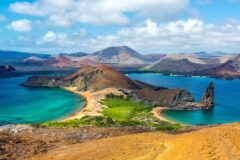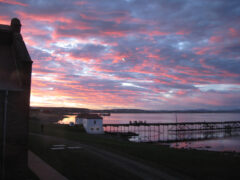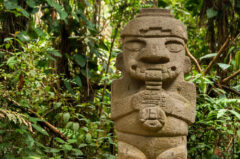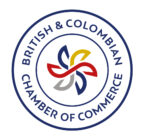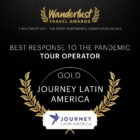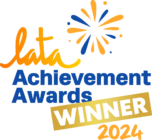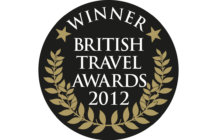A New Beginning
As part of a recent tour in Chile and Bolivia, I spent time with my group visiting a rehabilitation centre in Cochabamba for child burns victims run by the charity
Que Rico, and the hospital where the children are treated.
Que Rico is a non-profit organisation who support Mosoj Ph’unchay (meaning ‘new beginning’ in Quechua) in Cochabamba, Bolivia. Their inspirational work ensures that children with severe burns injuries are able to heal, and that they grow up to enjoy their future. The charity provides medical equipment, pain relief, medicine and volunteer doctors, specialists and teachers.
A short walk around the hospital emphasised the scale of the task facing those caring for the children. There was no waiting room – some queued outside during the bitterly cold highland nights. Children who had infected wounds were placed together in a single room. Many of the children rarely, if ever, saw their parents. We spoke with doctors and volunteers, and it was apparent that they were doing the best they could with limited resources. Bolivia is a country where over 60% of the population survive on less than $US 2 a day, and the president seems more interested in playing football with Diego Maradona than financing hospitals. The lowest income families are always those with least access to good medical care, and those most likely to suffer these kinds of injury.
It was difficult to walk through the burns unit. Every patient had suffered a serious injury, and as we learnt some of their stories it began to hit home just how tough life for these children can be. An eight-year old girl, Viviana, from a tribe in the jungle regions, had been pushed into a fire by some boys, and suffered 50% burns. She had been carried in a hammock to the nearest airport, put on a plane to Cochabamba, and had miraculously survived. She couldn’t return to her tribe for fear of revenge from her attackers. Twelve-year old Gloria had been burned by boiling water while she protected her brother from her parents, who were fighting. During her rehabilitation process, she revealed that she had been abused by her step-brother for the last three years, and was frightened to return to her family. One volunteer told me he’d seen a six-week old girl with 90% burns to her body.
Inside the hospital there was an overwhelming sense of pain. We were there to help, but I felt pretty helpless when faced with so much suffering. However, our spirits were lifted when we met the children who were nearly ready to go home. We’d met one of them at the hospital, a young girl called Michaela with a mischievous smile, who'd followed us around the centre, jumping around playfully trying to catch our attention. An American nurse told us, “she’s too happy to be a burns victim.”
Our guide for the two-day visit, Laura, walked us from the hospital to the inn where Michaela was waiting along with half a dozen children eager to play. We shared fizzy drinks and cake with them, and helped them with a painting exercise. I helped the shyest of the children, Oliver, who didn’t seem to speak much Spanish. He came from a family in the countryside who spoke Quechua, an indigenous language of the Andes, once used by the Incas. The children were a bit withdrawn at first, and seemed surprised that a group of wealthy foreigners were here to play games and eat cake with them.
When we came back the following morning, the screaming kids were delighted to see us. Little Oliver, who had been quiet and nervous the previous morning, ran towards me and promptly attached himself to my leg. Two of the boys came and welcomed me with big hugs as if I were a returning long-lost brother, and a young girl, Lizbeth, pinched my sunglasses and demanded I take her picture as she modelled them. The children had clearly accepted us. It made me realise that the children, many of whom were noticeably disfigured, had been thrilled to have a group of gringos visit. We had accepted them. Many people in their society hadn’t done so and perhaps would not ever. Laura told me that during the carnivals, when all the buses had been full, they had refused to let Diego get on, because ‘he was different’.
We piled all the children into taxis, and headed off towards the cable car. We were taking the children up the hill to the Christ statue that overlooks Cochabamba and the surrounding valley. The children had great fun on the climbing frames and swings and slides. Having seen the children in the hospital the morning before in so much pain, it really made me smile to see these kids, who had been through the same rehabilitation process and were now having the chance to be children. I hoped all the others I’d seen in the hospital would be playing here in the park before too long.
Up at the top, the children found another playground, before climbing up the last few steps. We bought them ice cream, and every so often Oliver and Lizbeth would come and steal my sunglasses and demand I take their picture, before Cristián, the oldest and most mature of the children, would give them back to me a few minutes later. In front of the Christ statue, some of the children began to spread their arms like the figure behind them. Of course, they insisted I take their photo. First Michaela, then Lizbeth, then Diego. Each child wanted their turn in the limelight, looking out over the city, on top of the world, spreading their wings under the huge statue, the immense blue sky, and the bright sun. Oliver was the last child to get his picture taken, and he screamed out into the valley, “I’m flying! I’m flying! I’m flying!”
Peter plans to support the work of Que Rico using the £5,000 bursary he received as the winner of Wanderlust’s World Guide Awards 2010.
Tailor-made holidays
Flexible, custom-made holidays to Latin America created to match your exact requirements: our tailor-made itineraries are as unique as the clients for whom they are designed.
Design my tripPapagaio
Your edit for Latin American inspiration
Our exciting range of articles on Latin America explore everything from iconic destinations and lesser-known cultural gems to delicious traditional recipes. You’ll also find exclusive travel tips, first-hand client reviews and the chance to get your personal questions answered by our travel experts.
View Extraordinary Inspiration